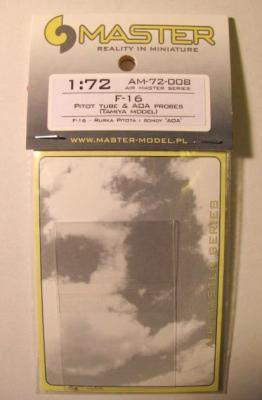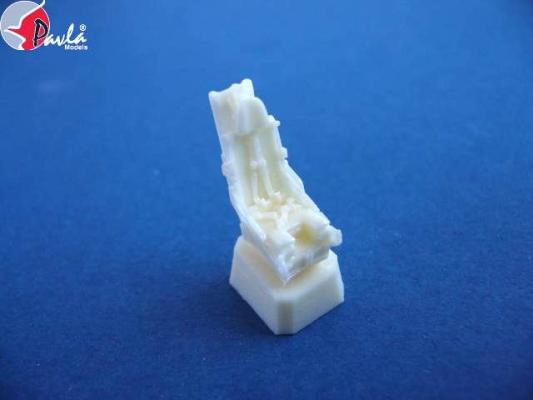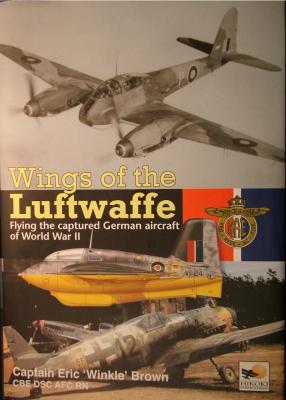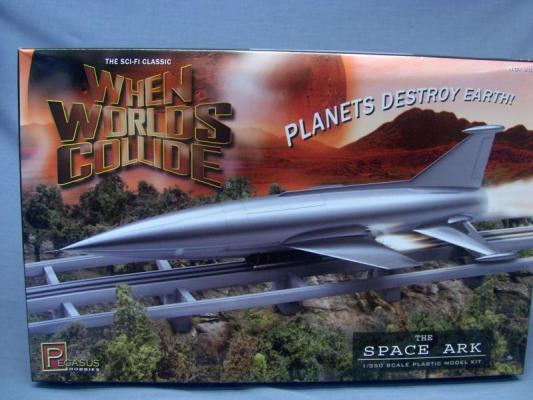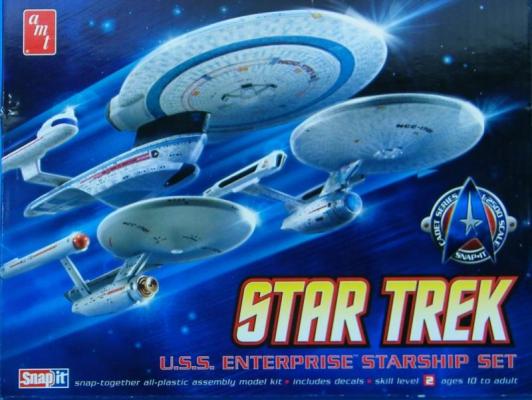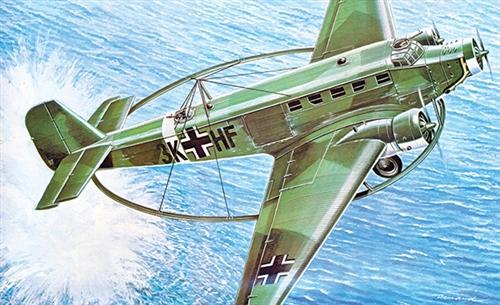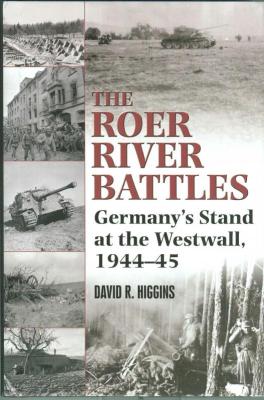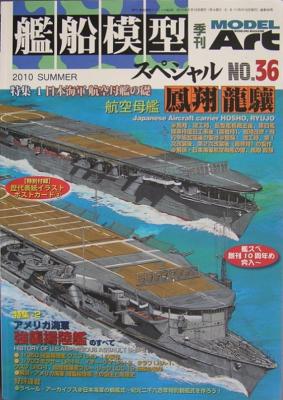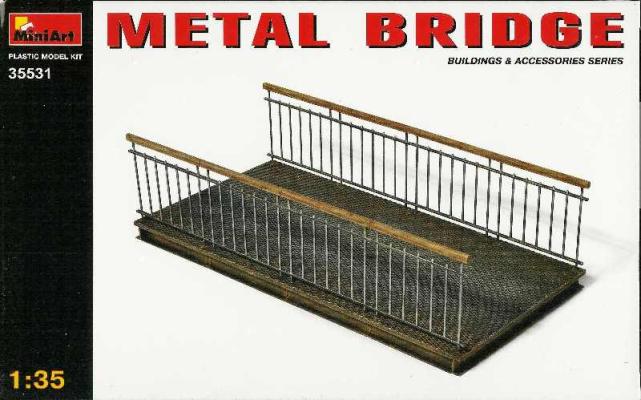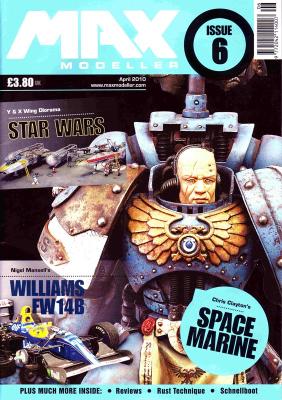In case you have already perused my review on the Master F-14 Alpha and Angle of Attack probe, this review was an added bonus when I voiced my interest to the Reviewer Corps. Unlike the Tomcat with a broken probe, I did not have a Viper in need of repair, nor did I have one assembled to add the parts to, but of course, I did have one or two sitting in my stash (there may be more, but please do not tell my wife). For the purpose of this review, I compared the Master set with what is provided in the Monogram release of a few years ago, which is actually a Revell Germany kit (according to the sprues anyway).
What's New
Pavla models has added an ejection seat to their 1/72 aircraft accessory line. This one is for the F-5, T-38. Pavla Models doesn’t specify a kit for this seat, but it will have to be a kit that has a cockpit in it. I picked the Italeri F-5A freedom fighter, kit # 1231.
This offering is a quality piece of resin; smooth, seamless and bubble free. The detail is also very nice and doesn’t need any extra work to bring out the detail. All that I needed to do to make it fit the kits cockpit was to just remove the molding block and paint it. A drop of super glue and it was installed.
When it is compared to the kit’s seat, you can see how superior it is. The kit seat is molded in two parts and there is a seam that runs right down the middle of the seat back. The seatbelts for the kit ejection seat is a decal. The Pavla ejection seat is one piece and the seat belts are molded onto the seat, making them pop out. I was really pleased with the end result.
Eric Brown is one of those very fortunate and rare individuals who happened to be not only in exactly the right place at the right time, but was eminently capable of extracting the most out of the opportunities presented him in the bargain. His qualifications and accomplishments as an airman leave most of the rest of us, military and civilian alike, deep in the shadows of the backfield. A distinguished combat veteran, he went on to become a world class test pilot logging test, experiment and evaluation time in 487 types of aircraft. In addition to 2,407 aircraft carrier landings, he has amassed a record of achievements, accomplishments, and awards that really do take the entire rear dust cover to list-without the need for filler and no double spacing. By anybody’s standard, Capt. Brown is the “real deal”.
If you are old enough, you may remember a great science fiction movie in 1952 called “When Worlds Collide”. The story line was that astronomers have discovered a sun and a planet on a collision course with the planet Earth.
After a great deal of discussion it is decided to build an “Ark”, a large rocket, capable of evacuating the best minds of science, engineering, animal husbandry, farming and other “best and brightest” citizens of the planet Earth to a new planet, and there to start a new race in peace and harmony. As would be expected, chaos erupts at the last hour, caused by the unfortunate people who are to be left behind. The Ark is launched just in time to avoid the collision and proceeds to the new Earth, finding it a paradise.
“1/2500 Scale – the final frontier. This is the kit review of the Starships “Enterprise.” Their 5-day mission: Amuse a 4-1/2 year-old little modeling nut, give his dad a chance to check out some new models of some old friends, and to boldly go where few built kits have gone before …(Wal-Mart, the public library, Lowes, Max & Erma’s, McDonalds, …anywhere little hands can carry them).”
Background
It’s hard for some of us to believe it’s been nearly a half-century since Star Trek’s debut in 1964. Over the decades, the Starship U.S.S. Enterprise, NCC-1701, has arguably become the most recognizable, esteemed, and influential vessel in intergalactic travel -- so influential that even the first NASA Space Shuttle bore her name as the result of a massive write-in campaign from Star Trek fans in the mid-1970’s.
Introduction
The Junkers JU-52/3m was to the Luftwaffe what the Douglas C-47 was to the American military during World War II. Stemming from Junkers’ World War I all-metal designs, the JU-52 first appeared in 1931 as a large, single engine transport, the last of which was produced during 1935. Only a few were built, but the trimotor JU-52/3m first flew in 1932, and it was an immediate success, being sold to Bolivia and Colombia as well as other European governments. Lufthansa began operating the type in 1932. Powered by a variety of engines, including a Diesel, the type quickly became a standard airliner during the middle thirties, and when the clandestine Luftwaffe was created after Hitler’s rise to power, the JU-52 was adapted as a bomber, seeing service in Germany and during the Spanish Civil War. It was World War II, however, that proved the versatility and usefulness of the type, and it was said that it was used for every military role possible except as a fighter.
This book describes the battles of the US First and Ninth Armies between the breakout of Normandy and the final crossing of the Roer River ending in late February of 1945. These two armies were located south of the British Army in the general area where Holland, Belgium and Germany meet.
The book is divided into 15 chapters with an introduction, 1 appendix, a Bibliography and Index:
ModelArt special subject magazines are really softbound reference books on a particular subject. ModelArt Summer 2010 No. 36 is entirely devoted to ships, so armor, aircraft and care buffs need not apply. In No. 36, the early, non-Akagi and non-Kaga aircraft carriers of the Imperial Japanese Navy are the topics – Hosho and Ryujo. You also get an update on US Navy amphibious warfare model kits and as-built Hiryu and Soryu kit modifications as bonuses. This issue
MiniArt definitely knows how to be creative with their sprues. This kit is nothing more than eight of their F sprues used to make a metal bridge with handrails. Sprue F is the sprue that was used in their “metal Stair”. This sprue is used to create the platform part of the stair kit.
This was a simple build. Cut some parts, do a little sanding and the bridge is done. The handrails are a different issue. They require lots of sanding or at least scraping. That is what I did to remove the large visible seam lines on the parts. When finished, the “bridge measures in at 5 7/8 long by 2 7/8 wide. Without the handrails attached you could get away with putting a number of vehicles on the bridge (as seen in the photos) If you end up attaching the handrails, you will be limited to what you can actually put onto the bridge.
I have been a fan of both AFV Modeller and Air Modeller for a while due to their excellent articles, top notch photos and in-depth subject matter, so when two sample copies of Max Modeller (Volumes 6 and 7) arrived, I was eager to see what the magazine was all about.
First, the basics: each magazine is 68 pages, printed completely in color, on nice stock. The photos are perfect- -clear and detailed, and close up when needed. There are scattered ads for many UK and other vendors in the magazine. There is a review section of 5 pages or so and they rate the reviewed kits. The remainder of the magazine has five articles and this is where the magazine gets its name.
The first thing you notice is that the builds are not OOB or “How to Airbrush Camouflage”. They are in-depth articles with large amounts of sculpting, scratch building or detailing involved. Here’s a list of the 10 articles between the two and a few observations:

